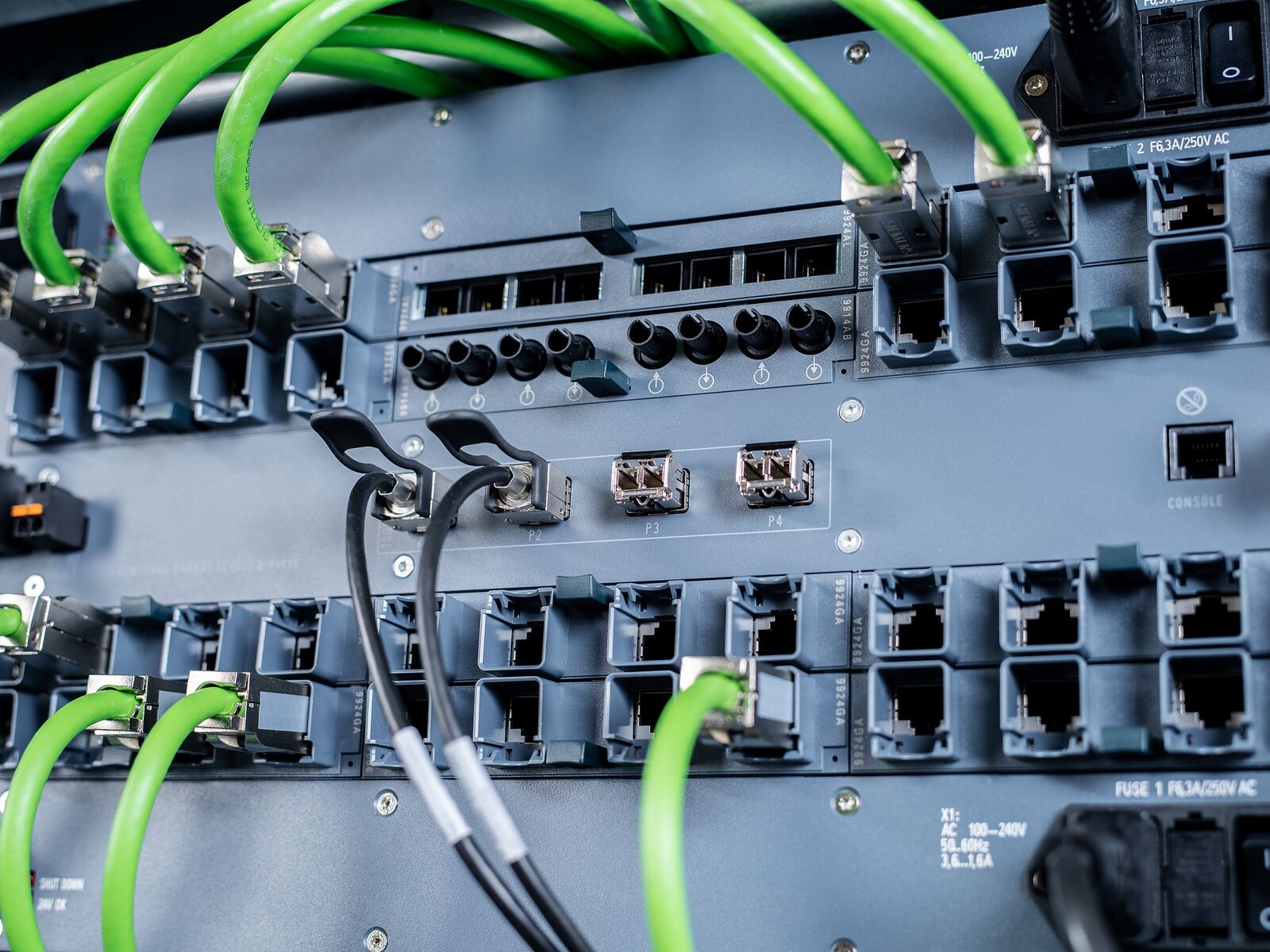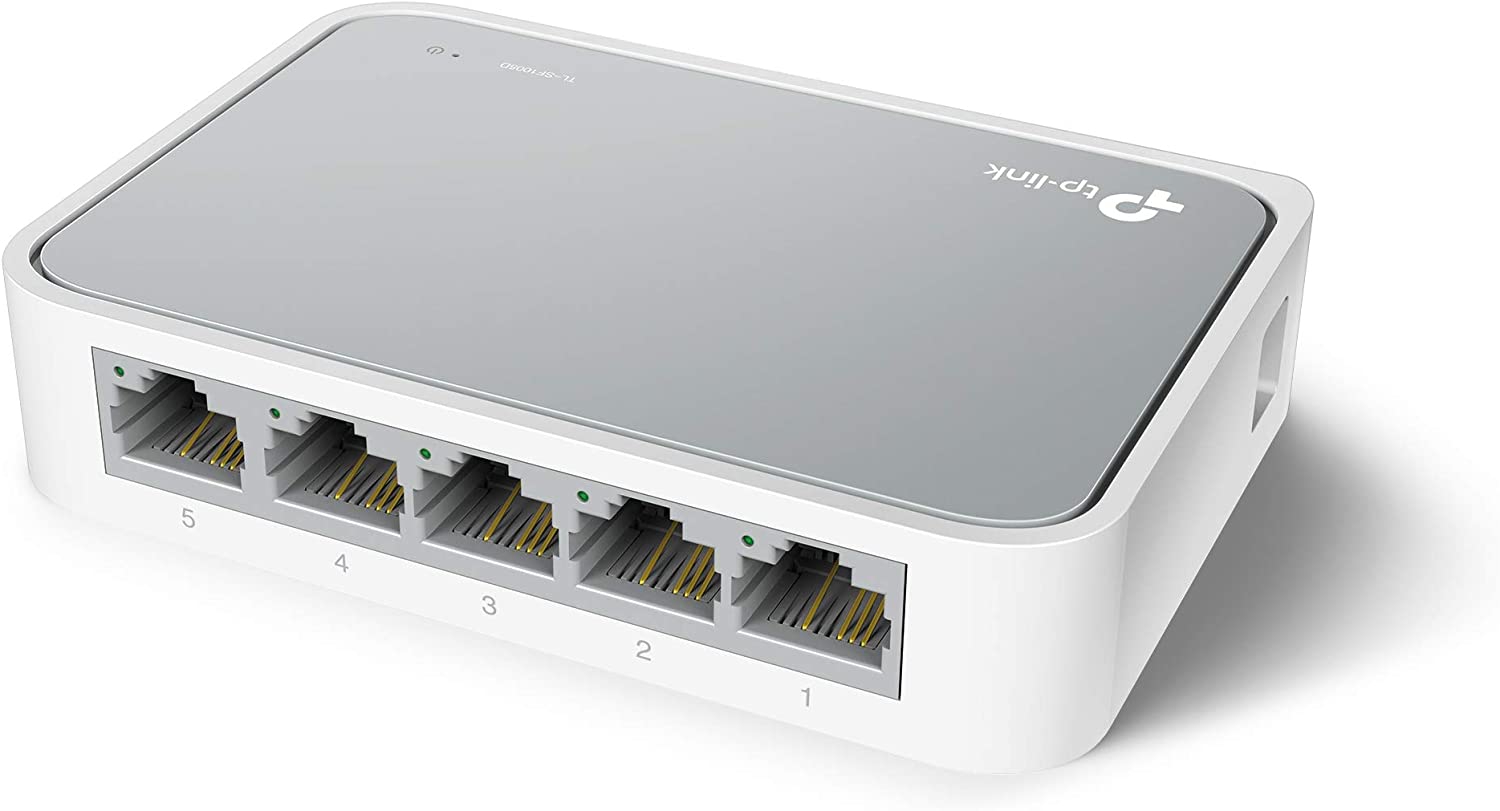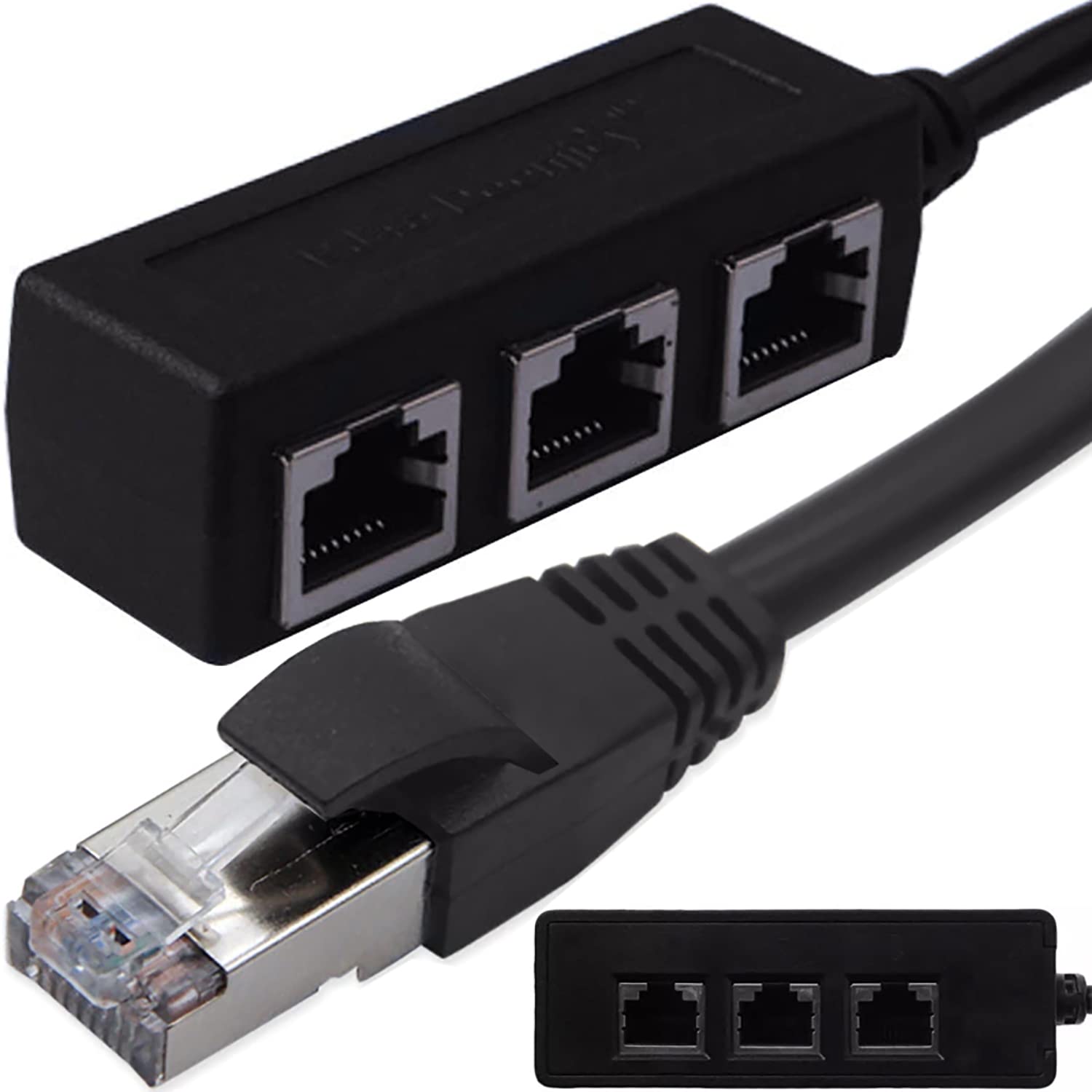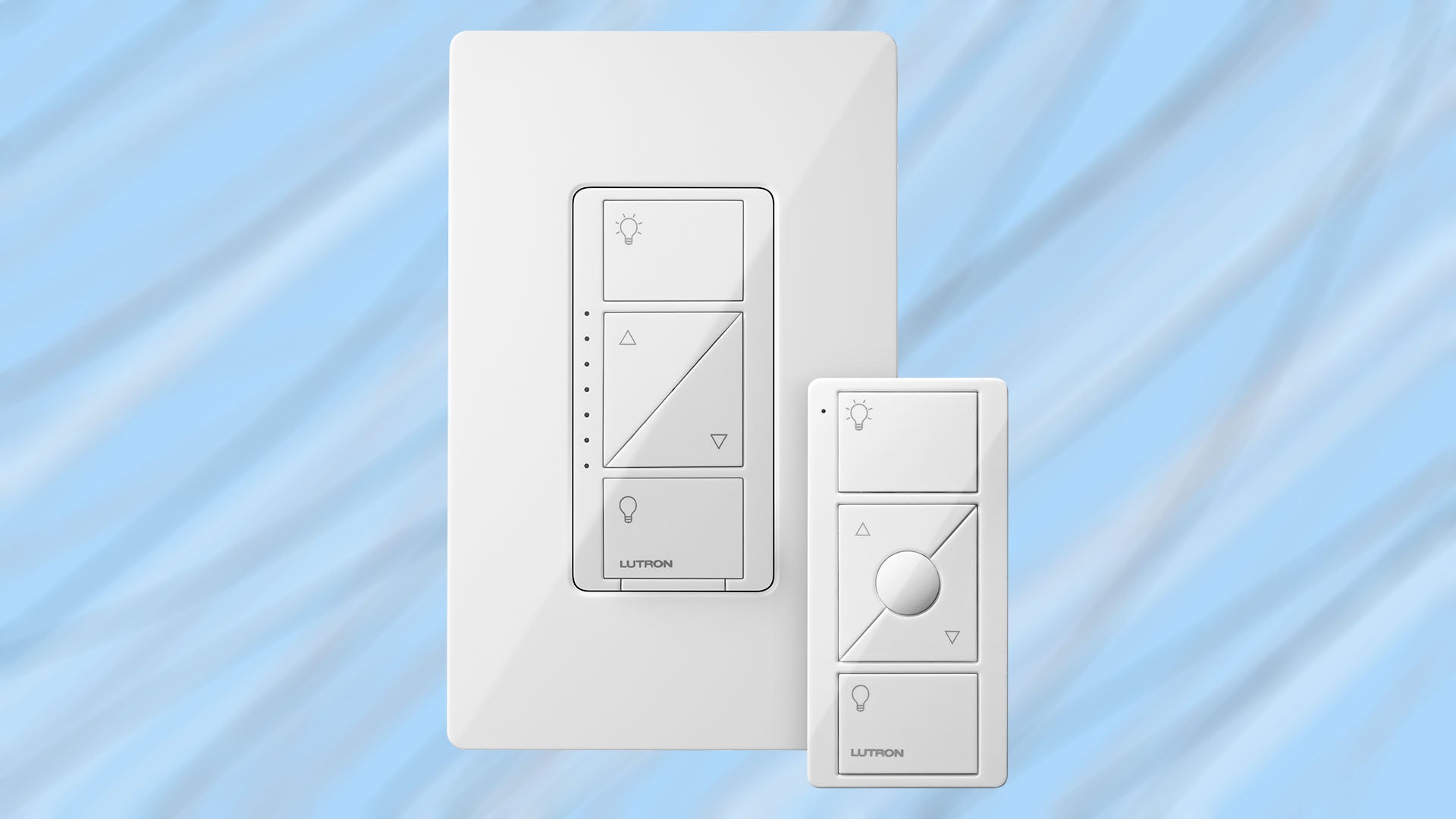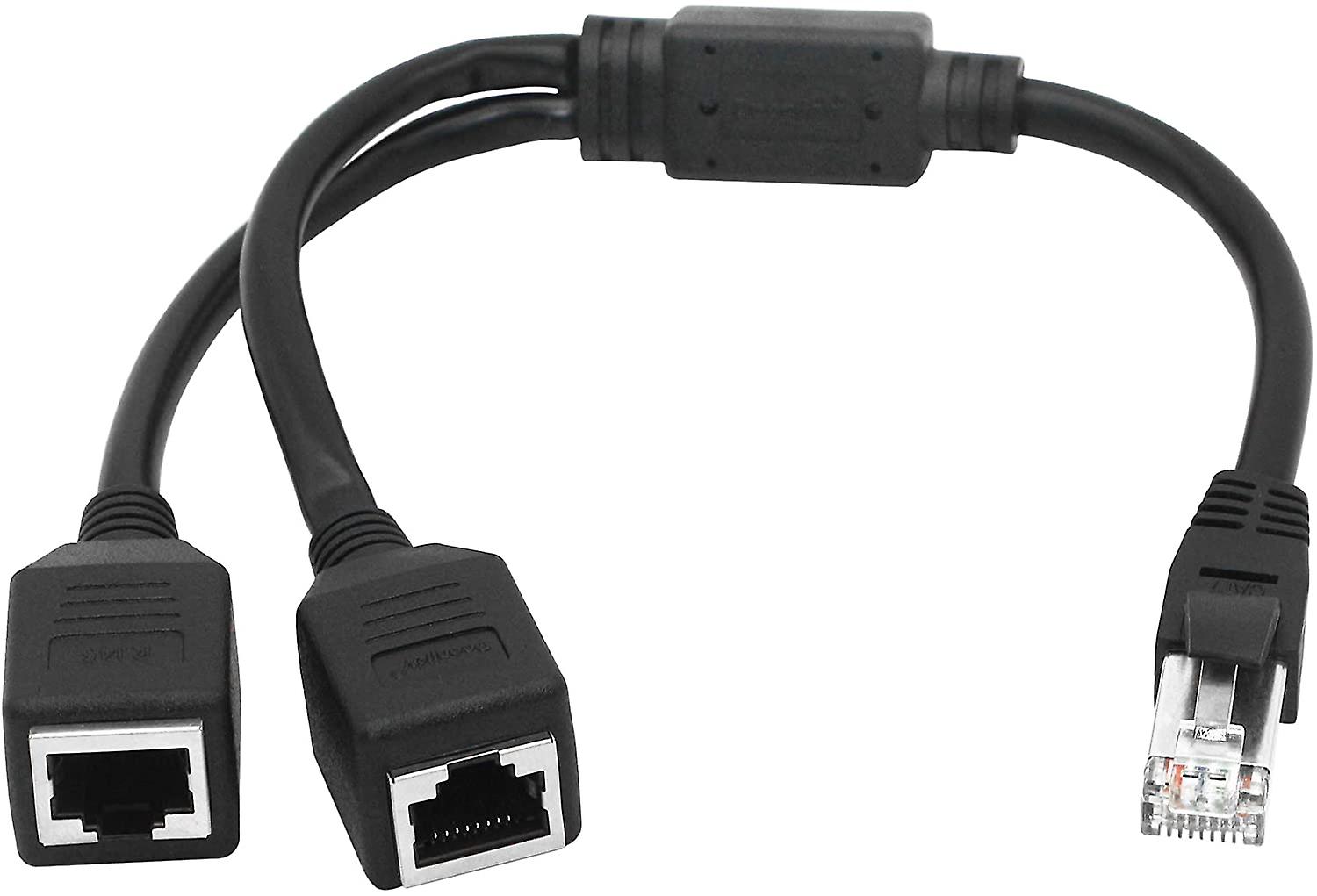Introduction
Are you looking to set up a network switch to connect multiple rooms in your home or office? A network switch is a crucial component for efficiently managing and distributing network connections, making it an essential tool for creating a seamless and reliable network infrastructure.
In this guide, we will explore the step-by-step process of setting up a network switch to support multiple rooms. Whether you're a tech-savvy enthusiast or a beginner in networking, this comprehensive walkthrough will equip you with the knowledge and skills needed to establish a robust network that meets your specific requirements.
By understanding the fundamentals of network switches, carefully planning your network layout, selecting the right switch for your needs, and executing the setup process, you can ensure that your network operates smoothly and efficiently. Additionally, we will cover how to connect devices to the network switch, perform testing, and troubleshoot common issues that may arise during the setup process.
So, let's delve into the world of network switches and embark on this journey to establish a reliable and efficient network infrastructure across multiple rooms. Whether you're setting up a network for your home, small business, or organization, this guide will provide you with the insights and guidance needed to successfully implement a multi-room network solution.
Understanding Network Switches
Before diving into the setup process, it’s essential to grasp the fundamental role of network switches in facilitating seamless communication and data transfer within a network. A network switch serves as a central hub that enables devices, such as computers, printers, and servers, to connect and communicate with one another. Unlike traditional hubs, which broadcast data to all connected devices, switches intelligently direct data only to the intended recipient, optimizing network performance and bandwidth utilization.
Network switches operate at the data link layer (Layer 2) of the OSI model, allowing them to efficiently manage and control data traffic within a local area network (LAN). By utilizing MAC addresses, switches create a dynamic forwarding table that maps the addresses of connected devices, enabling them to deliver data packets directly to their intended destinations. This efficient data routing capability minimizes network congestion and enhances overall network efficiency.
Modern network switches come in various configurations, including unmanaged, managed, and smart switches, each offering distinct features and capabilities to suit different networking needs. Unmanaged switches are plug-and-play devices that require minimal setup and are ideal for basic network deployments. Managed switches provide advanced configuration options, allowing network administrators to exert precise control over network traffic, security, and quality of service (QoS). Smart switches offer a middle ground, providing some management features while remaining user-friendly and easy to deploy.
Understanding the differences between these switch types is crucial in determining the most suitable option for your multi-room network setup. Additionally, as network technology continues to evolve, newer switches may incorporate features such as Power over Ethernet (PoE) support, VLAN (Virtual Local Area Network) capabilities, and enhanced security protocols, further expanding their utility and flexibility in diverse networking environments.
By gaining a comprehensive understanding of network switches and their functionalities, you can make informed decisions when selecting the right switch for your multi-room network infrastructure. With this knowledge as a foundation, you’ll be well-prepared to proceed with planning and executing the setup of your network switch for multiple rooms.
Planning Your Network Layout
Creating a well-structured network layout is a critical initial step in setting up a network switch for multiple rooms. A carefully planned network design not only ensures efficient connectivity but also allows for scalability and future expansion. When planning your network layout, consider the following key factors:
- Room Configuration: Evaluate the physical layout of the rooms where network connections are required. Identify the locations of existing network outlets, power sources, and potential areas for additional network infrastructure.
- Bandwidth Requirements: Determine the bandwidth needs of each room and the devices within them. Consider factors such as video streaming, file transfers, and real-time communication to gauge the necessary network capacity.
- Future Growth: Anticipate future network expansion and the potential addition of new devices or rooms. Design the network layout with scalability in mind to accommodate future growth without requiring significant reconfiguration.
- Security Considerations: Assess the security requirements for each room and implement measures to protect sensitive data and ensure secure communication across the network.
- Redundancy and Reliability: Plan for redundancy to minimize network downtime in case of hardware failures. Implementing redundant connections and backup power sources can enhance the reliability of the network.
Once you’ve evaluated these factors, create a detailed network layout diagram that illustrates the interconnections between rooms, network switches, and other networking equipment. This visual representation will serve as a blueprint for the physical implementation of the network infrastructure.
Furthermore, consider the cable management and routing requirements to ensure a tidy and organized network installation. Selecting high-quality Ethernet cables and employing proper cable management techniques will contribute to a neat and professional network setup while minimizing signal interference and maintenance challenges.
By meticulously planning your network layout, you can establish a robust foundation for deploying a network switch that effectively serves multiple rooms. This proactive approach sets the stage for a streamlined and well-organized network infrastructure that caters to your current needs and accommodates future advancements in networking technology.
Choosing the Right Network Switch
When selecting a network switch for a multi-room setup, it’s essential to consider several crucial factors to ensure that the chosen switch aligns with the specific requirements of your network infrastructure. Here are key considerations to guide your decision-making process:
- Port Count and Speed: Evaluate the number of devices to be connected in each room and the expected data transfer requirements. Choose a switch with an adequate number of ports and the appropriate speed, such as Gigabit Ethernet, to accommodate the network demands of each room.
- Managed or Unmanaged: Determine whether your network necessitates the advanced configuration and monitoring capabilities offered by a managed switch. For more straightforward deployments, an unmanaged switch may suffice, while managed switches provide greater control and flexibility over network operations.
- Power over Ethernet (PoE): If your network requires the seamless integration of powered devices, such as IP cameras, wireless access points, or VoIP phones, consider a PoE-enabled switch to deliver power and data over a single Ethernet cable, simplifying installation and reducing cable clutter.
- Layer 2 or Layer 3: Assess the networking needs of your multi-room setup to determine whether a Layer 2 switch, which operates at the data link layer, or a Layer 3 switch, offering routing capabilities at the network layer, is more suitable for your requirements.
- Quality of Service (QoS): If your network demands prioritization of certain types of traffic, such as voice or video data, opt for a switch with QoS support to ensure that critical data receives preferential treatment, enhancing overall network performance.
- Scalability and Expansion: Anticipate future growth and the potential addition of new devices or rooms. Select a switch with sufficient scalability and expansion options to accommodate the evolving needs of your network infrastructure.
Additionally, consider the reputation and reliability of the switch manufacturer, as well as the availability of technical support and warranty coverage. Reading customer reviews and seeking recommendations from networking professionals can provide valuable insights into the performance and durability of the switch models under consideration.
By carefully evaluating these considerations and matching them to the specific requirements of your multi-room network, you can make an informed decision when choosing the right network switch. This strategic selection process ensures that the switch not only meets your current networking needs but also aligns with your future expansion plans and technological advancements.
Setting Up the Network Switch
Once you have selected the appropriate network switch for your multi-room setup, it’s time to proceed with the physical installation and configuration of the switch. Follow these steps to ensure a seamless setup process:
- Location and Mounting: Choose a central and well-ventilated location for the network switch to ensure optimal connectivity and heat dissipation. Mount the switch securely on a stable surface or rack, considering future expansion and maintenance access.
- Power and Connectivity: Connect the switch to a reliable power source and verify that all necessary power indicators are functioning. Utilize high-quality Ethernet cables to establish connections between the switch and the network outlets in each room, ensuring proper cable management and labeling for easy identification.
- Initial Configuration: If deploying a managed switch, access the switch’s management interface using a web browser or dedicated management software. Configure essential settings such as IP addressing, VLANs, and security parameters based on your network design and security requirements.
- Testing and Verification: Power on the switch and perform thorough testing to ensure connectivity and data transfer across all connected rooms. Verify that devices in each room can seamlessly communicate with one another and access network resources without any issues.
- Documentation and Labeling: Document the switch’s configuration settings, including IP addresses and port assignments, to maintain a comprehensive record of the network infrastructure. Label each network outlet and corresponding switch port to facilitate troubleshooting and future maintenance.
During the setup process, prioritize adherence to best practices for network installation, including cable management, grounding, and compliance with safety regulations. Additionally, consider implementing security measures such as MAC address filtering, port security, and firmware updates to bolster the resilience of the network against potential security threats.
Furthermore, if your network switch supports advanced features such as VLANs, QoS, or link aggregation, take advantage of these capabilities to optimize network performance and enhance the segmentation and prioritization of network traffic across the multi-room setup.
By meticulously executing the setup of the network switch and adhering to industry best practices, you can establish a robust and reliable network infrastructure that seamlessly interconnects multiple rooms while promoting efficient data transfer and communication.
Connecting Devices to the Network Switch
With the network switch in place, the next crucial step is to connect devices in each room to the switch, enabling seamless network access and communication. Follow these guidelines to ensure a successful device connection process:
- Device Identification: Identify and document the devices that will be connected to the network switch in each room. This may include computers, printers, IP phones, wireless access points, smart devices, and other network-enabled equipment.
- Ethernet Connectivity: Utilize high-quality Ethernet cables to establish connections between the devices and the network switch. Ensure that the cables are terminated correctly and securely inserted into the appropriate switch ports and device Ethernet interfaces.
- Power over Ethernet (PoE) Devices: If deploying PoE-enabled devices, such as IP cameras or wireless access points, connect them directly to PoE-capable switch ports to receive both power and data over a single Ethernet cable, simplifying installation and reducing cable clutter.
- Configuration and Testing: Once the physical connections are established, power on the devices and verify network connectivity. Perform network tests to ensure that each device can communicate with other devices on the network and access shared resources, such as network storage or printers.
- Wireless Access Points: If deploying wireless access points to extend network coverage, connect them to the switch and configure them to provide reliable and secure wireless connectivity in each room. Ensure proper placement of access points to optimize wireless signal coverage and minimize potential interference.
As devices are connected to the network switch, consider implementing network segmentation through the use of VLANs to logically isolate different types of devices or user groups. This segmentation enhances network security and performance by controlling the flow of traffic and minimizing the impact of potential security breaches or network congestion.
Furthermore, prioritize the implementation of robust network security measures, including strong device authentication, encryption protocols, and regular security updates, to safeguard the network against unauthorized access and potential cyber threats. By maintaining a proactive approach to network security, you can protect sensitive data and ensure the integrity of network communications across multiple rooms.
By meticulously connecting devices to the network switch and implementing security best practices, you can establish a resilient and well-connected network environment that accommodates the diverse connectivity needs of each room while upholding robust security standards.
Testing and Troubleshooting
After the initial setup and device connections, thorough testing is essential to validate the functionality and reliability of the multi-room network. Additionally, having a structured approach to troubleshooting common issues ensures a swift resolution in the event of connectivity or performance challenges. Here’s how to effectively conduct testing and address potential network issues:
- Connectivity Testing: Perform comprehensive connectivity tests to verify that all devices in each room can communicate with one another and access network resources without any hindrances. Test data transfer rates and latency to ensure optimal network performance.
- Bandwidth and Load Testing: Assess the network’s capacity to handle simultaneous data traffic from multiple devices in different rooms. Use network testing tools to measure bandwidth utilization and identify potential bottlenecks that may impact network performance.
- Security Auditing: Conduct security audits to evaluate the effectiveness of implemented security measures, including firewall configurations, access controls, and encryption protocols. Address any identified vulnerabilities or misconfigurations promptly.
- Quality of Service (QoS) Verification: If QoS features are implemented, validate that critical network traffic, such as voice or video data, receives the prioritization specified in the QoS policies. Adjust QoS settings as needed to optimize network performance.
- Troubleshooting Methodology: Develop a systematic troubleshooting approach that includes identifying and isolating network issues, utilizing diagnostic tools, and referencing network documentation to pinpoint and resolve connectivity or performance challenges.
In the event of network issues, consider common troubleshooting strategies such as verifying cable connections, checking for firmware updates on network devices, and reviewing switch configuration settings for any misconfigurations or errors. Additionally, leverage network monitoring tools to proactively identify and address network anomalies that may impact overall performance.
Documentation of testing results and troubleshooting procedures is invaluable for future reference and maintenance activities. Maintain detailed records of network tests, identified issues, and their respective resolutions to facilitate efficient troubleshooting and continuous network optimization.
By rigorously testing the network and implementing a structured troubleshooting approach, you can identify and address potential issues proactively, ensuring that the multi-room network operates at peak performance and reliability while upholding robust security standards.
Conclusion
Establishing a network switch for multiple rooms demands careful planning, meticulous execution, and a comprehensive understanding of networking principles. By delving into the intricacies of network switches, meticulously planning the network layout, selecting the right switch, and executing the setup process, you can create a robust and efficient multi-room network infrastructure.
Understanding the fundamental role of network switches in directing data traffic and optimizing network performance lays the groundwork for a successful network setup. By carefully considering factors such as port count, speed, managed capabilities, and future scalability, you can strategically choose a network switch that aligns with your specific networking needs.
Thorough planning of the network layout, encompassing aspects such as room configuration, bandwidth requirements, and security considerations, ensures a well-structured and scalable network design. This proactive approach sets the stage for a streamlined and organized network infrastructure that caters to current needs and accommodates future growth.
The physical installation and configuration of the network switch, coupled with meticulous device connections and security implementation, form the backbone of a reliable multi-room network. Rigorous testing and troubleshooting methodologies further validate the network’s functionality, resilience, and security, ensuring optimal performance and swift resolution of potential issues.
By adhering to best practices, implementing robust security measures, and maintaining a proactive approach to network management, you can establish a resilient and efficient network infrastructure that seamlessly interconnects multiple rooms while upholding stringent security standards.
Embark on this journey equipped with the knowledge and insights gained from this guide, and transform your vision of a multi-room network into a reality that fosters seamless connectivity, efficient data transfer, and secure communication across your home, office, or organization.







